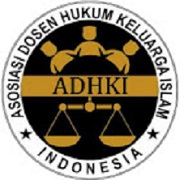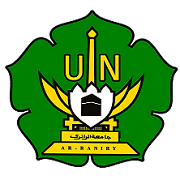Non-Astronomical Aspects of the Success of Rukyatul Hilal in East Java
Abstract
The success of rukyatul hilal (moon sighting) is not only influenced by the physical aspects of the hilal (the crescent moon), but also depends on non-physical (non-astronomical) aspects. In the last 5 years, 7 out of 23 locations in East Java have contributed to sighting the hilal while other locations have experienced failures due to various constraints and obstacles. This paper evaluates these locations using geographical and topographical theories to delve into three main questions: the implementation of rukyatul hilal activities in East Java, the influence of geographical and topographical conditions of the locations, and the mapping of rukyatul hilal locations in East Java. Research data were measured and observed directly and indirectly using Google Earth with area sampling and non-probability sampling techniques. Research findings reveal that: first, rukyatul hilal is carried out at the beginning of each Hijri month by most observers at several locations during important months such as Ramadan, Shawwal, and Dhul Hijjah with the naked eye, while other locations use optical aids with low success rates; second, geographically, most rukyatul hilal locations in East Java are located near the equator with the main obstacle being disturbances from fog pollution, dust, clouds, rain, and other atmospheric particles; and third, out of 23 active rukyatul hilal locations in East Java mapped: a) locations categorized as observatories, with two observatories that do not fully contribute to moon observations, b) other hilal observation locations categorized as locations located on the north and south coast, with five locations that do not fully contribute to hilal observations, and c) other hilal observation locations categorized as locations located at high altitudes, with seven locations contributing to the implementation of hilal sighting and three locations dominating the production of hilal visibility more than once.
Keywords
Full Text:
PDFReferences
Leo M. Chalupa and Robert W. Williams. Eye, Retina, and Visual System of The Mouse,. Hongkong: Massachusetts Institute of Technology, 2008.
Abubakar, Ali, Gamal Achyar, Husnul Khatimah, and Sri Astuti A. Samad. “The Postponement of the Implementation of Inheritance Distribution in The Seunuddon Community, North Aceh In The Lens Of ‘Urf Theory and Legal Pluralism.” El-Usrah: Jurnal Hukum Keluarga 6, no. 2 (2023). https://doi.org/10.22373/ujhk.v6i2.10207.
Andrew T. Duchowski. Eye Tracking Methodology: Theory and Practice. Edited by Springer. 3rd ed. London, 2017.
Azhari, Susiknan. Hisab & Rukyat: Wacana Untuk Membangun Kebersamaan Di Tengah Perbedaan. Yogyakarta: Yogyakarta: Pustaka Pelajar, 2007.
Barbieri, Cesare. Fundamental of Astronomy. New York: CRC Press, 2007.
Barlow, H. B. “The Size of Ommatidia in Apposition Eyes,” 1952.
C, Russ John. The Image Processing Handbook. CRC Press, 2006.
Chen, James L. A Guide to Hubble Space Telescope Objects. London: Springer, 2015.
David J. Shayler and David M. Harland. The Hubble Space Telescope: From Concept to Success. New York: Springer, 2016.
Departemen Agama RI. Pedoman Tehnik Rukyat. Jakarta: DEPAG RI, 1995.
“Directorate General of Islamic Guidance, Ministry of Religious Affairs of the Republic of Indonesia,” n.d.
Dirjen Bimas Islam Kemenag RI. Pedoman Teknik Rukyat, n.d.
Fadholi, Ahmad. “Pandangan ormas islam terhadap draf kriteria baru penentuan kalender hijriah di indonesia.” Istinbath 17, no. 1 (2018). https://doi.org/10.20414/ijhi.v17i1.41.
Fauzi, Fauzi. “‘Urf and Its Role in The Development of Fiqh: Comparative Study of Famliy Law Between Egypt and Indonesia.” El-Usrah: Jurnal Hukum Keluarga 7, no. 1 (2024). https://doi.org/10.22373/ujhk.v7i1.23968.
Fernald, M. F. “The Evolution of Eyes”. Annual Review of Neuroscience", 1992.
Gazali Masroeri. “‘Manajemen Rukyat’ in Gazali Masroeri, Pendidikan Dan Pelatihan Nasional Pelaksana Rukyat Nahdlatul Ulama on 17-23 December 2006,” n.d.
Grierson, Ian. The Eye Book: Eyes and Eye Problems Explained,. Liverpool: Liverpool University Press, 2000.
Habibi, BJ. Pengantar Rukyah Dengan Teknologi: Upaya Mencari Kesamaan Pandangan Tentang Penentuan Awal Ramadhan Dan Syawal,. Jakarta: Gema Insani, 1994.
Islam, Bimas. Keputusan Menteri Agama RI, 1 Ramadan, Syawal Dan Zulhijjah 1381-1440 H/1962 M – 2019 M., 2019.
Jayusman. “Kajian Ilmu Falak Perbedaan Penentuan Awal Bulan Kamariah: Antara Khilafiah Dan Sains.” Jurnaliainpontianak, 2015.
Kementerian Agama RI. Almanak Hisab Rukyat,. Jakarta: Direktorat Bimas Islam, 2010.
Kenneth, P. Explanatory Supplement to The Astronomical Almanac,. California: University Science Books, 2006.
Khazin, Muhyiddin. Ilmu Falak Dalam Teori Dan Praktek. Yogyakarta: Buana Pustaka, 2005.
Khudari, Ismail. ““Analisis Tempat Rukyat Hilal Di Jawa Tengah (Studi Analisis Astronomis Dan Geografis.,” n.d.
Laila, Nur Quma, and Irwan Abdullah. “Questioning Fiqh Muamalah of Toleration: Religious Spatial Segregation in the Urban Area of Yogyakarta.” Al-Ihkam: Jurnal Hukum Dan Pranata Sosial 17, no. 1 (2022). https://doi.org/10.19105/AL-LHKAM.V17I1.5419.
Muhammad Faisal Amin. “Ketajaman Mata Kriteria Visibilitas Hilal,” 2020.
Muhtar Salimi. “‘Visibilitas Hilal Minimum: Studi Komparatif Antara Kriteria Depag RI Dan Astronomi.’” Jurnal Penelitian Humaniora 6, no. 1 (2005).
Musonnif, Ahmad. Ilmu Falak. Yogyakarta: Teras, 2011.
Mustakim, Riza Afrian. “‘Teknologi Rukyatul Hilal Dalam Tinjauan Maslahah Mursalah,.’” Jurnal Al-‘Ibrah, 14, no. 1 (2018): p.
Mustaqim, Riza Afrian. “Pandangan Ulama Terhadap Image Processing Pada Astrofotografi Di BMKG Untuk Rukyatul Hilal.” Al-Marshad: Jurnal Astronomi Islam Dan Ilmu-Ilmu Berkaitan 4, no. 1 (June 30, 2018). https://doi.org/10.30596/jam.v4i1.1937.
Mustofa, Agus. , Jangan Asal Ikut-Ikutan Hisab & Rukyat,. Surabaya: PADMA Press, 2013.
Nasaruddin Umar. “Memahami Hal Itsbat Dalam Perspektif Fiqh Siyasah, Paper Presented at Diklat Nasional Pelaksana Rukyat Nahdlatul Ulama on 17-23 December 2006 in Masjid Agung Semarang Jawa Tengah,” n.d.
Nashiruddin, Muh. Kalender Hijriyah Universal,. Semarang: El Wafa, 2013.
Nawawi, Abdus Salam. “Tradisi Fiqh NU: Analisis Terhadap Konstruksi Elit NU Jawa Timur Tentang Penyatuan Awal Bulan Islam, Dissertation.” Postgraduate of IAIN Surabaya, 2008.
Paul J, Heafner. Fundamental Ephemiris Computations. Edited by Willmann-Bell. Virginia, 1999.
Pengurus PBNU. (Pengantar), Pedoman Hisab Dan Rukyat Nahdlatul Ulama. Edited by Lajnah Falakiyah PBNU, 2006.
Pratama, Dito Alif. “Ru’yat Al-Hilāl Dengan Teknologi : Telaah Pelaksanaan Ru’yat Al-Hilāl Di Baitul Hilal Teluk Kemang Malaysia.” Al-Ahkam 26, no. 2 (December 2, 2016). https://doi.org/10.21580/ahkam.2016.26.2.930.
Rahmah, Nihayatur. “Observasi Dan Observatorium (Peluang Dan Tantangan Rukyatul Hilal Di Indonesia).” Jurnal Al-Mabsut: Jurnal Studi Islam Dan Ilmu Sosial 12, no. 2 (2018).
Ramdan, Anton. Islam Dan Astronomi,. Jakarta: Bee Media Indonesia, 2009.
Ruskanda, Farid. 100 Masalah Hisab Dan Rukyat Telaah Syariah, Sains Dan Teknologi. Jakarta: Gema Insani Press Ruskanda, 1996.
Saksono, Tono. Mengkompromikan Rukyat Dan Hisab. Jakarta: Amythas Publicita in collaboration with CIS, 2007.
Salamun Ibrahim. Ilmu Falak. Surabaya: Pustaka Progressif, 2000.
Setiawan, Dedy. “Hubungan Antara Umur Dan Intensitas Cahaya Las Dengan Kelelahan Mata Pada Juru Las Pt. X Di Kabupaten Gresik.” The Indonesian Journal of Occupational Safety and Health 5, no. 2 (2017). https://doi.org/10.20473/ijosh.v5i2.2016.142-152.
T. Djamaluddin. Menggagas Fiqh Astrononi Telaah Hisab-Rukyat Dan Pencarian Solusi Perbedaan Hari Raya. Bandung Kaki Langit, 2005.
“The Image Was Successfully Captured by the Observatory Team of POB Syekh Belabelu on August 5, 2024, at 5:59 PM WIB.,” n.d.
Thomas Djamaluddin. Astronomi Memberi Solusi Penyatuan Umat. Jakarta: Lapan, 2011.
Tjasyono, Bayong. Ilmu Kebumian Dan Antariksa. Bandung: UPI dan Rosdakarya, 2006.
Treman, I Wayan. Geomorfologi. Yogyakarta: Graha Ilmu, 2014.
Ulfah, Nur, SitiJurusan Harwanti, and Ngadiman. “Pengaruh Usia Dan Status Gizi Terhadap Ketajaman Penglihatan.” Jurnal Kesmasindo 6, no. 1 (2013).
Wijaya, Agus Fanny Chandra. , “Gerak Bumi Dan Bulan.” Jayapura: Digital Learning Studi, 2010. http://file.upi.edu.
Yusmar, Syarifuddin. ““Penanggalan Bugis-Makasar Dalam Penentuan Awal Bulan Kamariah Menurut Syaria’ah Dan Sains.” Hunafa 5, no. 3 (2008). https://doi.org/https://doi.org/10.24239/jsi.Vol5.Iss3.175.
Laws, Government Regulations, And Guidelines
Law Number 31 of 2009 of the Republic of Indonesia Concerning Meteorology, Climatology, And Geophysics.
Government Regulation Number 46 Of 2012 of the Republic of Indonesia Concerning the Implementation of Observation and Data Management of Meteorology, Climatology, And Geophysics.
NU Central Board Decision Number 311/A.II.03/I/1994 Concerning Operational Guidelines for the Implementation of Rukyat bil Fi'li within the NU Environment dated 1 Sya'ban 1415 H/January 13, 1994 M.
DOI: http://dx.doi.org/10.22373/sjhk.v8i3.25258
Refbacks
- There are currently no refbacks.
Copyright (c) 2024 Achmad Mulyadi

This work is licensed under a Creative Commons Attribution-ShareAlike 4.0 International License.
Samarah: Jurnal Hukum Keluarga dan Hukum Islam has been indexed by:


















